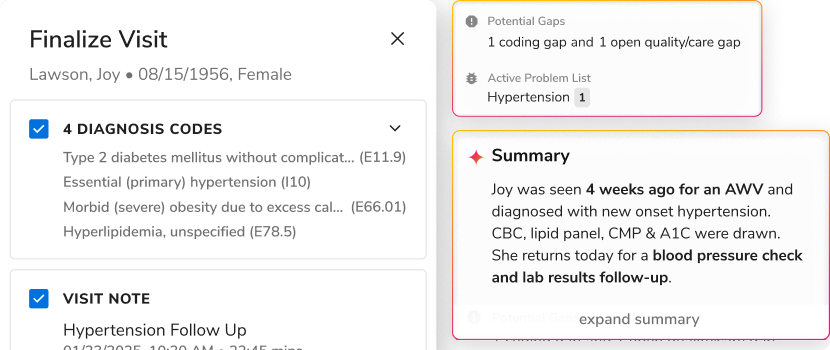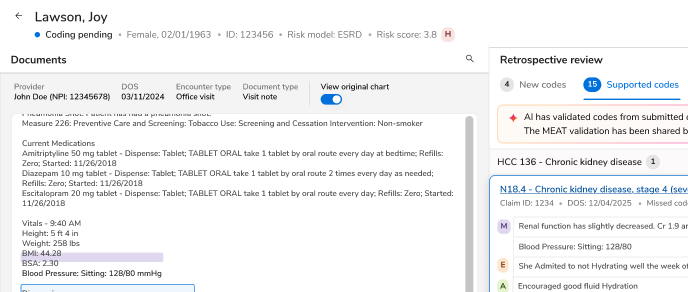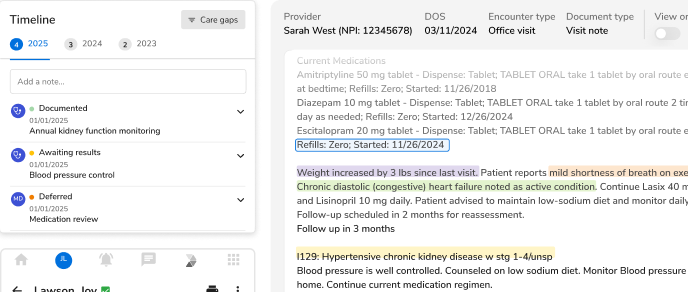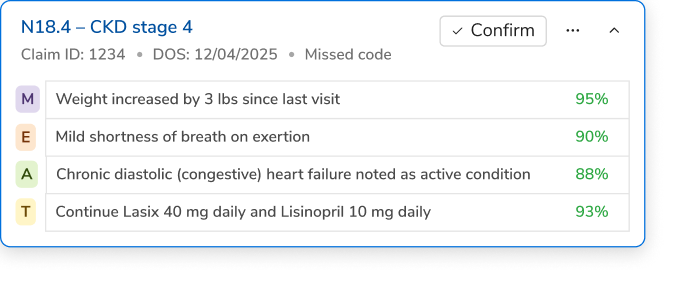Reducing 30-Day Readmission Rates Using Data, Analytics, and Transitional Care Management Protocols

According to CMS, 7 out of 10 hospitals participating in the Hospital Readmission Reduction Program (HRRP) will face penalties in 2024. Around 70% of hospitals will incur penalties of less than 1% for their readmissions, while 7% will face penalties of 1% or more. This poses a significant challenge to the healthcare industry's pursuit of value since readmissions are one of the biggest costs hospitals must bear.
The Medicare Payment Advisory Commission (MedPAC) estimates that 12% of hospital readmissions are avoidable, and eliminating just 10% of them could save Medicare $1 billion. Reducing unplanned readmissions is more critical than planned readmissions. Patients with chronic conditions often require several readmissions, which can be managed efficiently in terms of cost and resources. However, unplanned readmissions reflect the quality of care provided by hospitals throughout a patient's inpatient stay and following discharge. Appropriate follow-up care is critical in improving outcomes, reducing readmission rates, and avoiding significant costs.
Addressing the Revolving Door of Hospital Readmissions in the US
In 2010, the Hospital Readmissions Reduction Program (HRRP) was announced as part of the Affordable Care Act. Under the program, hospitals are financially penalized for higher-than-expected 30-day readmission rates.
To reduce readmissions, hospitals have attempted a variety of interventions, including arranging post-discharge follow-up care, ensuring medication reconciliation, partnering with local care providers, and conducting follow-up phone calls. According to a report by the Kaiser Family Foundation, Medicare beneficiaries with congestive heart failure experienced average readmission rates of 22% between 2011 and 2014, a decline of 2.5% compared to 2005 to 2008.
Despite these efforts, however,,40% of patients are discharged with pending test results and 83% of hospitals were penalized in 2020 by CMS for higher-than-expected readmission rates.
Analyzing the Factors Behind Higher Hospital Readmission Rates
Understanding the factors that contribute to higher readmission rates is crucial for developing more effective prevention strategies. Root causes can be sorted into two areas:
- Inadequate Data Capabilities: Healthcare data remains fragmented across various sources including electronic health records (EHR), claims, and labs. Hospitals often still lack the capacity to collect, aggregate, and clean this data effectively, making it inaccessible to care teams.
This also prevents providers from leveraging predictive analytics that would identify high-risk patients prone to readmissions and enable tailored interventions. - Lack of Follow-Up: Gaps in care coordination around post-discharge care can lead to increased readmissions.
Patients may lack resources to recover at home, or they may not fully comprehend their treatment plans. Follow-up care is critical to ensure patients adhere to their care plans and avoid complications that could lead to readmissions.
Using Data and ML Models to Reduce Readmissions in ACOs
By leveraging data, providers and care coordinators can identify high-risk patients early, allowing for proactive care coordination and follow-up.
ML-based models enable care teams to identify high-risk patients, schedule post-discharge PCP visits or follow-ups, and provide necessary support to prevent adverse drug events. Incorporating AI in the effort to prevent avoidable readmissions can significantly enhance value-based care, improve patient health outcomes, and lower costs.
How Can Innovaccer Help?
The Innovaccer data platform aggregates cleans, and standardizes patient data, creating comprehensive longitudinal records. With control over data quality and output, health systems can prioritize patient care.
Innovaccer integrates advanced data capabilities with ML-based models that enable predictive analytics. Innovaccer’s ML-based model is built for value-based care and accurately predicts unplanned 30-day readmissions by assigning a risk percentile to patients. Leveraging post-discharge data from various sources like EMR, claims, ADT, and SDoH, Innovaccer enables providers to prevent unnecessary readmissions and improve patient outcomes. By identifying high-risk cohorts and offering personalized interventions, Innovaccer helps a health system minimize rebounds and optimize patient care.

Innovaccer’s Data Platform facilitates seamless access to data insights at the point of care. Innovaccer's industry-recognized population health management suite provides care teams with applications such as:
- P360: This application offers a comprehensive view of the patient's health journey, allowing for a better understanding of their health objectives.
- InCare: Designed for care coordination, InCare provides pre-built, smart, and fully customizable care protocols. It assists care teams in performing administrative tasks before, during, and after in-patient visits.
- InGraph: This tool offers advanced analytics and reporting capabilities, allowing providers to track key performance indicators (KPIs) and continuously assess the quality of care.
Innovaccer has partnered with leading health systems to address their challenges and support faster innovation. For example, CHI Health, a leading healthcare provider in Nebraska, recognized the need for a transformative data-driven care management strategy to reduce readmissions and overall healthcare costs. To achieve this, they utilized Innovaccer's platform and comprehensive care management solution, implementing automated TCM protocols to determine appropriate care pathways for their patients.
By implementing Innovaccer's care management solution, CHI Health reduced the readmission rate for the Commercial population from 9.7% to 7.5%, generating an annualized net value of $245,000. Additionally, they managed post-ED spending through dedicated ED follow-up protocols, resulting in an average cost reduction of $2,008 for the MA population, $1,198 for the Medicare population, and $1,725 for the Commercial population, totaling $2.4 million in value.
For complete details on how CHI Health successfully reduced readmission rates using the Innovaccer data platform, refer to our case study. To witness the power of the Innovaccer platform and advanced population health management solution suite, book a demo with our experts.

.png)





.png)









.svg)
.svg)

.svg)

